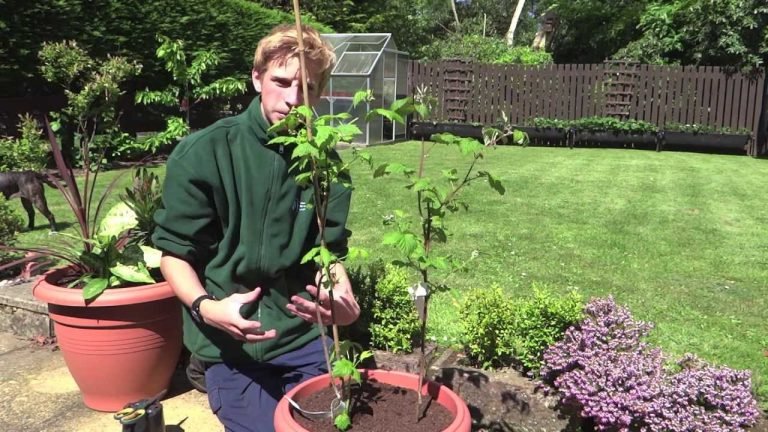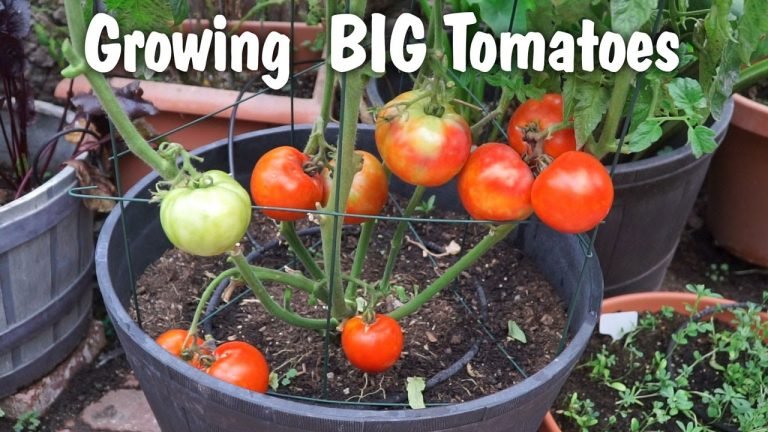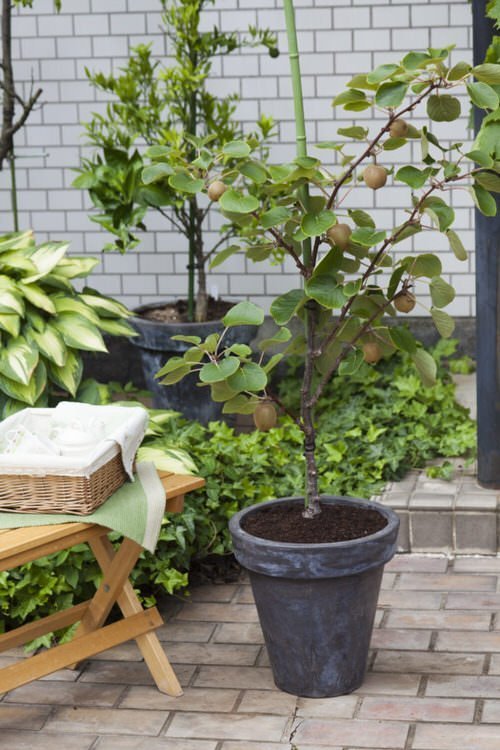how to grow lettuce in a pot – [Beginners Guide]
Hey there! Are you looking to add some fresh greens to your home garden? Look no further than growing lettuce in a pot! As someone who has been growing lettuce in pots for a while now, I can confidently say it’s a great idea for a few reasons.
First off, it’s incredibly easy to do. Lettuce is a low maintenance plant that doesn’t require a lot of space or attention, making it perfect for a small balcony or windowsill. And, because it’s grown in a pot, it can be easily moved around to find the perfect spot for it to thrive.
Not only is it easy, but it’s also cost-effective. Buying pre-packaged lettuce from the store can add up quickly, but by growing your own, you can save money in the long run. Plus, there’s nothing quite like the taste of fresh-picked lettuce straight from your own garden.
Finally, growing lettuce in a pot is a great way to reduce your carbon footprint. By growing your own produce, you are reducing the amount of energy used to transport store-bought lettuce to your location.
So, why not give it a try? You’ll be surprised at how easy and rewarding it is to grow your own lettuce in a pot. Happy gardening!
Pot or container selection
When it comes to growing lettuce in a pot, the most important thing to consider is the size and capacity of the pot. Lettuce is a small plant, so you don’t need a large pot to accommodate its roots. In fact, a pot with a capacity of at least 6 inches is more than enough to grow a healthy lettuce plant.
The construction of the pot is also important for optimal growth. It’s best to use a pot made of a porous material, such as terra cotta, which allows for proper drainage. Lettuce does not like to be in standing water, so a pot with drainage holes at the bottom is necessary to prevent water from pooling at the bottom of the pot.
Additionally, consider using a pot with a saucer or tray to catch excess water. This will help prevent water from spilling out of the drainage holes and onto your floors or furniture.
In summary, when growing lettuce in a pot, it’s important to use a pot that is the right size and has good drainage. A pot with a capacity of at least 6 inches and made of a porous material like terra cotta is ideal. And, a saucer or tray to catch excess water is also recommended.
Make suitable soil mix
Lettuce is a cool-season crop that prefers well-drained soil with a neutral pH of 6.0-7.0. The soil should be rich in organic matter and have a consistent moisture level.
A good soil mix for growing lettuce at home is a combination of peat moss, vermiculite, and compost. Peat moss helps to retain moisture and improves the soil structure, while vermiculite improves drainage and aeration. Compost adds essential nutrients to the soil, such as nitrogen, phosphorus, and potassium.
The ideal ratio for this soil mix is 1:1:1 (by volume) of peat moss, vermiculite, and compost. For example, if you use a 1-gallon container, you would mix together 1/3 gallon of peat moss, 1/3 gallon of vermiculite, and 1/3 gallon of compost.
It’s important to note that the correct soil composition is essential for optimal growth of lettuce. Lettuce has shallow roots, so the soil must be well-draining to prevent waterlogging. The pH must be neutral to slightly acidic, as lettuce will not grow in alkaline soil. Additionally, Lettuce requires moderate amounts of Nitrogen,Phosphorus, and Potassium for healthy growth.
Soil Mix for Growing Lettuce:
1 part peat moss
1 part vermiculite
1 part compost
Neutral pH (6.0-7.0)
Adequate Drainage
Moderate amount of Nitrogen, Phosphorus, Potassium for healthy growth.
How to plant the lettuce?
Step 1: Gather your materials. You will need a pot (at least 6 inches deep), potting soil, lettuce seeds, and a watering can or spray bottle.
Step 2: Fill the pot with potting soil, leaving about an inch of space at the top.
Step 3: Sprinkle the lettuce seeds on top of the soil, spacing them out evenly.
Step 4: Gently press the seeds into the soil, and then lightly sprinkle soil over the top of the seeds.
Step 5: Water the soil, making sure to thoroughly soak it.
Step 6: Place the pot in a sunny location, such as a windowsill or patio.
Step 7: Keep the soil consistently moist, but not waterlogged. Water the lettuce whenever the top inch of soil is dry.
Step 8: Wait for the lettuce to germinate, which usually takes about 7-14 days.
Step 9: Once the lettuce is about 2-3 inches tall, thin out the seedlings so that each plant has about 2-3 inches of space around it.
Step 10: Continue to care for the lettuce by keeping the soil moist and providing it with plenty of sunlight. Lettuce is typically ready to harvest in 30-60 days.
Step 11: Enjoy your homegrown lettuce in your salads or sandwiches!
Note:
Use a well-draining potting soil mix
Lettuce prefers a cool and moist environment, so keep them shaded during the hot summer days.
If you’re growing lettuce indoors, it’s best to use a grow light to supplement the natural light.
How to care for lettuce?
Lettuce Care in a Pot
Watering Requirement
Lettuce requires consistent moisture to grow properly. It is important to keep the soil consistently moist, but not waterlogged. A good way to check if your lettuce needs water is to stick your finger into the soil, if it feels dry about an inch below the surface, it is time to water. A general guideline for watering is about 1 inch of water per week, either from rainfall or irrigation.
Fertilizer Requirement
Lettuce is a cool-season crop that does not require much fertilizer. A light application of a balanced, water-soluble fertilizer about once a month is sufficient. Avoid over-fertilizing, as this can lead to lush growth but poor flavor and bolting (going to seed prematurely).
Sunlight Needs
Lettuce prefers cool weather and partial shade. It is best to place your lettuce pot in a location that receives morning sun and afternoon shade or dappled sunlight throughout the day. In hot weather, lettuce will bolt (go to seed) quickly so it’s important to provide shade or move the pot to a cooler location.
Pruning & Training
Lettuce does not require much pruning or training. Simply remove any yellow or damaged leaves as they appear. If the lettuce starts to bolt (go to seed), you can cut off the flower stem to prolong the harvest.
Other Care
- Use a well-draining soil mixture specifically formulated for container gardening.
- Keep the lettuce pot out of strong winds to prevent damage to the leaves.
- Keep an eye out for pests such as aphids, slugs, and snails and take action as needed.
In summary, Lettuce in a pot needs consistent moisture, light application of fertilizer, partial shade, minimal pruning and training and protection from pests and strong winds to grow optimally.
Common problems
Pests
Common pests that can affect lettuce grown in a pot at home include aphids, whiteflies, and spider mites. These pests can cause damage to the leaves and reduce the overall yield of the plant. To control pests, it is important to keep an eye out for signs of infestation and take action early on, such as by using insecticidal soap or neem oil.
Diseases
Lettuce grown in a pot at home can also be susceptible to a variety of diseases, including downy mildew, lettuce mosaic virus, and bacterial leaf spot. These diseases can cause discoloration and wilting of the leaves, and can ultimately lead to plant death. To prevent diseases, it is important to practice good hygiene, such as by not overcrowding plants and avoiding overhead watering.
Poor Production
Poor production can be caused by a variety of factors, including poor soil quality, lack of sunlight, or incorrect watering practices. To ensure that your lettuce plants are productive, it is important to use high-quality potting soil, provide them with at least 6 hours of direct sunlight per day, and water them consistently, but not to the point of saturation.
Other Issues
Other issues that can affect lettuce grown in a pot at home include nutrient deficiencies, such as a lack of nitrogen or phosphorus, and exposure to extreme temperatures, such as heat stress or frost damage. To prevent these issues, it is important to fertilize the plants regularly and to protect them from extreme temperatures by moving them indoors or providing shade as necessary.
Harvesting & storing homegrown lettuce
Harvesting Lettuce
Lettuce is typically ready to harvest between 45 and 75 days after planting, depending on the variety. To know when your lettuce is ready to harvest, look for leaves that are a dark green color and are firm to the touch. The leaves should be crisp and not wilted.
How to harvest
- Use scissors or a sharp knife to cut the leaves from the base of the plant.
- Leaves should be harvested in the morning when they are most crisp
- Avoid harvesting leaves that are yellow or brown, as they are past their prime
Storing Lettuce
Lettuce is best stored in a plastic bag or container in the refrigerator. To keep the lettuce fresh for as long as possible, wrap it in a paper towel before placing it in the bag or container. The paper towel will help absorb any excess moisture and prevent the lettuce from getting slimy.
Lettuce can be stored in the refrigerator for 3-7 days depending on the freshness when harvested.
Growing lettuce in container – Conclusion
Conclusion
Growing lettuce in a pot is a great way to enjoy fresh, homegrown lettuce in a small space. With the right conditions and care, lettuce can thrive in a pot and be ready for harvest in just a few weeks.
By following the steps outlined in this guide, you can successfully grow your own lettuce in a pot at home.
- Choose a container with drainage holes
- Fill with a high-quality potting mix
- Plant lettuce seeds or seedlings
- Place the pot in a sunny spot
- Water regularly and fertilize as needed
Give it a try! Growing lettuce in a pot is easy and rewarding. Not only will you have fresh, healthy lettuce to enjoy, but you’ll also have the satisfaction of growing it yourself. Give it a try and see how great homegrown lettuce can taste!








